Americans walk far less for transportation than residents of other industrialized nations, a new report emphasizes — the latest evidence that the nation needs to rethink its autocentric policies and put people first.
In a new study published in Sustainability, mobility researchers Ralph Buehler and John Pucher took on the daunting task of standardizing a messy range of global data on walking trips to better see how the United States stacks up against its peer nations.
The results probably won't be surprising to sustainable transportation advocates, though they will be illuminating. Of the 11 countries in the sample for which data was available for all trip purposes, the U.S. tied for last with notoriously car-dependent New Zealand among the populations that walk for the lowest percentage of overall trips (12 percent). When it came to walking trips specifically to work, Americans moved only slightly more than Australians, at 3.0 and 2.5 percent of commutes, respectively.
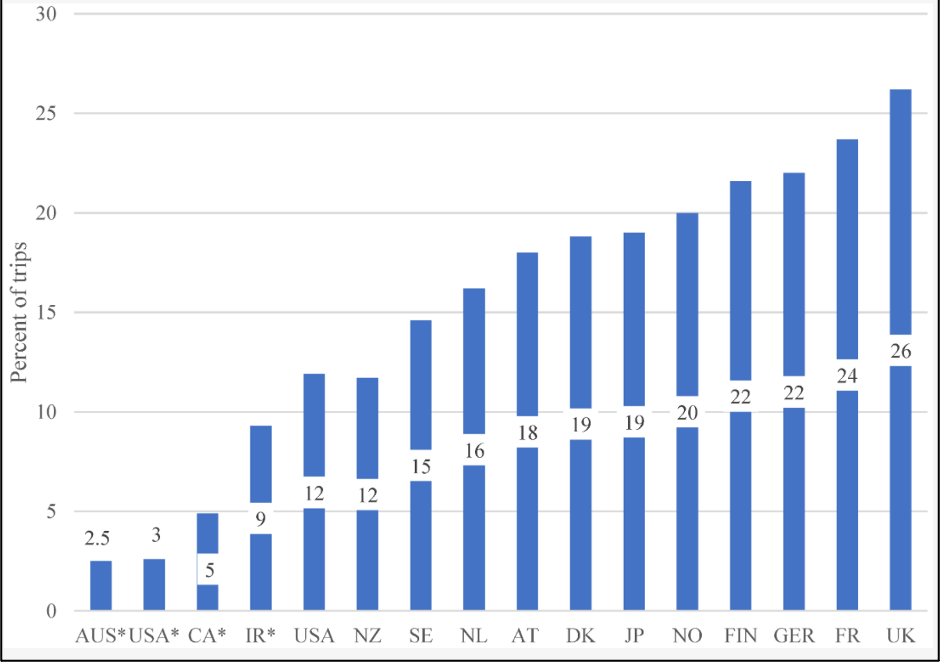
In the United Kingdom, meanwhile, walking trips make up more than twice as large a percentage of all journeys outside the home than they do in the U.S., at 26 percent. France, Germany, Finland, and Norway weren't far behind, with modal splits between 20 and 24 percent, and residents of Sweden, the Netherlands, Austria, and Denmark all did between 15 and 19 percent of their journey on foot or with the aid of an assistive device.
The authors of the study, though emphasize that there's nothing that makes America an inherently pedestrian-hostile country — and that by adopting the transportation policies of our more active peer nations, we can overcome what may feel like an insurmountable collective obsession with cars.
"There’s no question there are differences in walking rates among the countries, but it’s not as if all the conditions are totally different," said Pucher. "We have to ask; do [other countries] do something special in terms of government policies, infrastructure, or design that make it more convenient, safe, comfortable, interesting and safe to walk than in the us? Yes, they do. But I’m really not convinced by the argument that [the U.S’s lack of walking] is just cultural, and that it can't change."
Here are three takeaways that show just how much work we have to do to make that change happen.
1. Sprawl doesn't explain it all
A common hypothesis about why Americans don't walk much is that the country is just so vast that we simply can't manage it — or that restrictive land use policies are forcing developers to build grocery stores and schools a daunting number of miles from people's homes. And while the study authors say there's truth in that, they also found that even when it comes to the shortest trips, residents of the United States still hoof it less than half as much as their European counterparts, and about a third as much as people in Japan.
"The reason why so few people walk in suburban New Jersey isn’t because of the size of the Arizona desert; it's because it's not very pedestrian friendly," said Buehler. "Most daily trips are under one mile, two miles, three miles — and in the U.S. they’re still done by car. ... Walking is really determined on the micro-scale; if there are no sidewalks, or if it doesn’t feel safe, people will not do it, even if the trip is short."
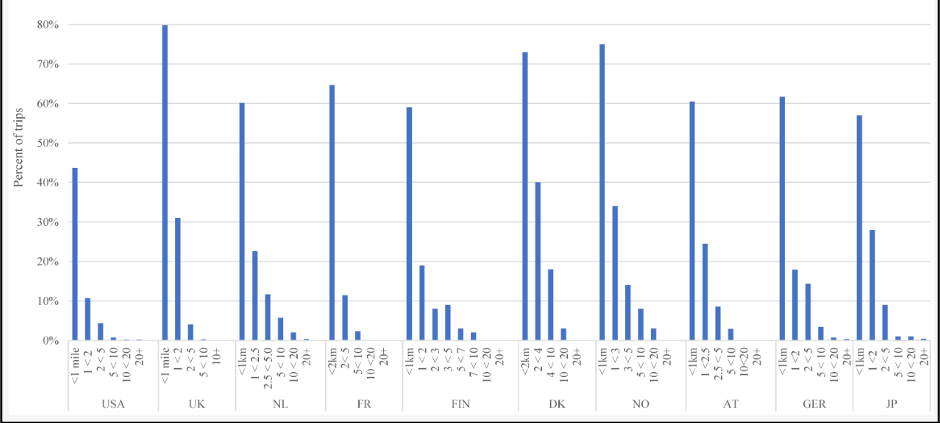
2. Walking is a lifeline for the poor – but in America, it's also a luxury
Cars cost a lot, so it's no surprise that as people gain access to wealth around the world, they tend to drive a little more — and walk a little less. Of the three countries for which the researchers could find data on the income distribution of pedestrians, though, Americans were the only ones for whom the richest fifth of the population walked more than the middle class, though not nearly as much as the poorest fifth.
The reason, Buehler suspects, is simple: "Because we don’t supply a lot of them, walkable places sell for a premium."
And for everyone else stuck in an autocentric place, walking is a mode of last resort.
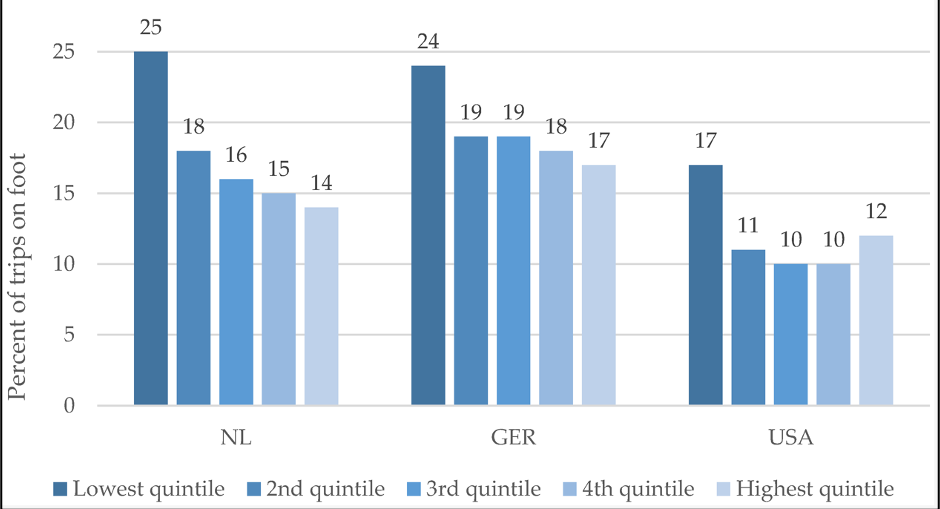
3. Pedestrians die more on U.S. roads by every metric — and it's getting worse
It won't be news to Streetsblog readers that the U.S. is way deadlier for walkers than our peer nations, and has been since around 2009, which researchers suspect is largely attributable to the rising dominance of SUVs and light trucks. It's still breathtaking, though, to see just how rapidly our per-capita death rate has risen compared to 1990 levels.
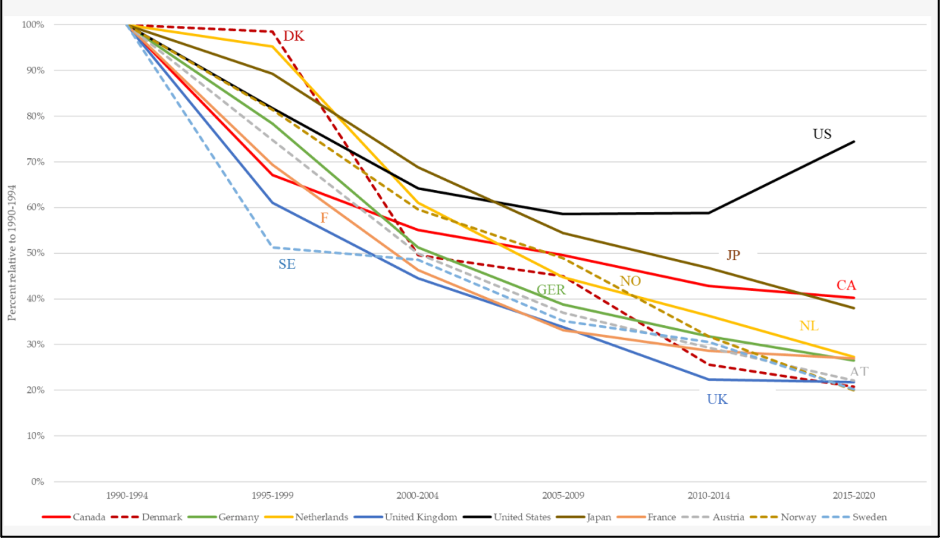
It's also worth noting, though, that Americans die more per mile walked than just about anywhere else for which we have reliable data — specifically, around six times more than the UK, Germany, Denmark, and the Netherlands. And even as the number of miles we walk continues to fall, the death rate has barely budged.
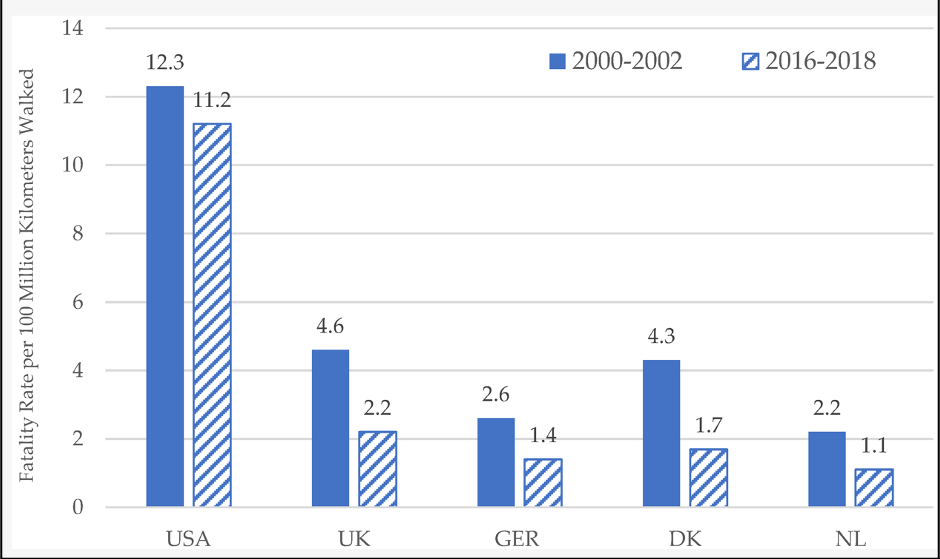
"In other countries, walking is getting safer and safer, but not here – and almost all of it has to do with the dangers imposed by motor vehicles," added Pucher. "And a lot of those dangers are the result of public policies: not enforcing speed limits, having speed limits set too high, allowing fast traffic in residential neighborhoods where it doesn’t belong, not having safe intersections for safe crossing."
These sobering graphics, though, could also be seen as an opportunity.
"If the U.S. imitates policies that are already prevalent overseas, more people will walk," Buehler said. "That's the good news."







